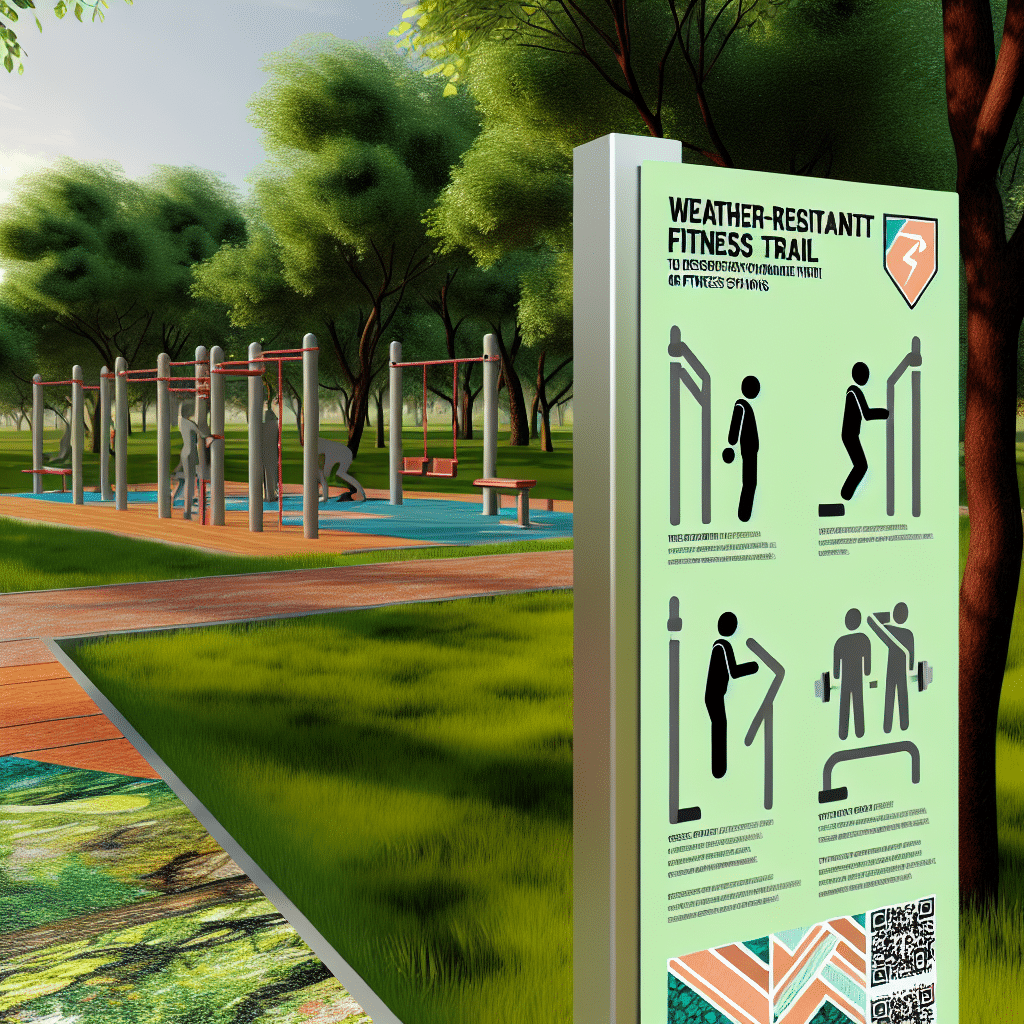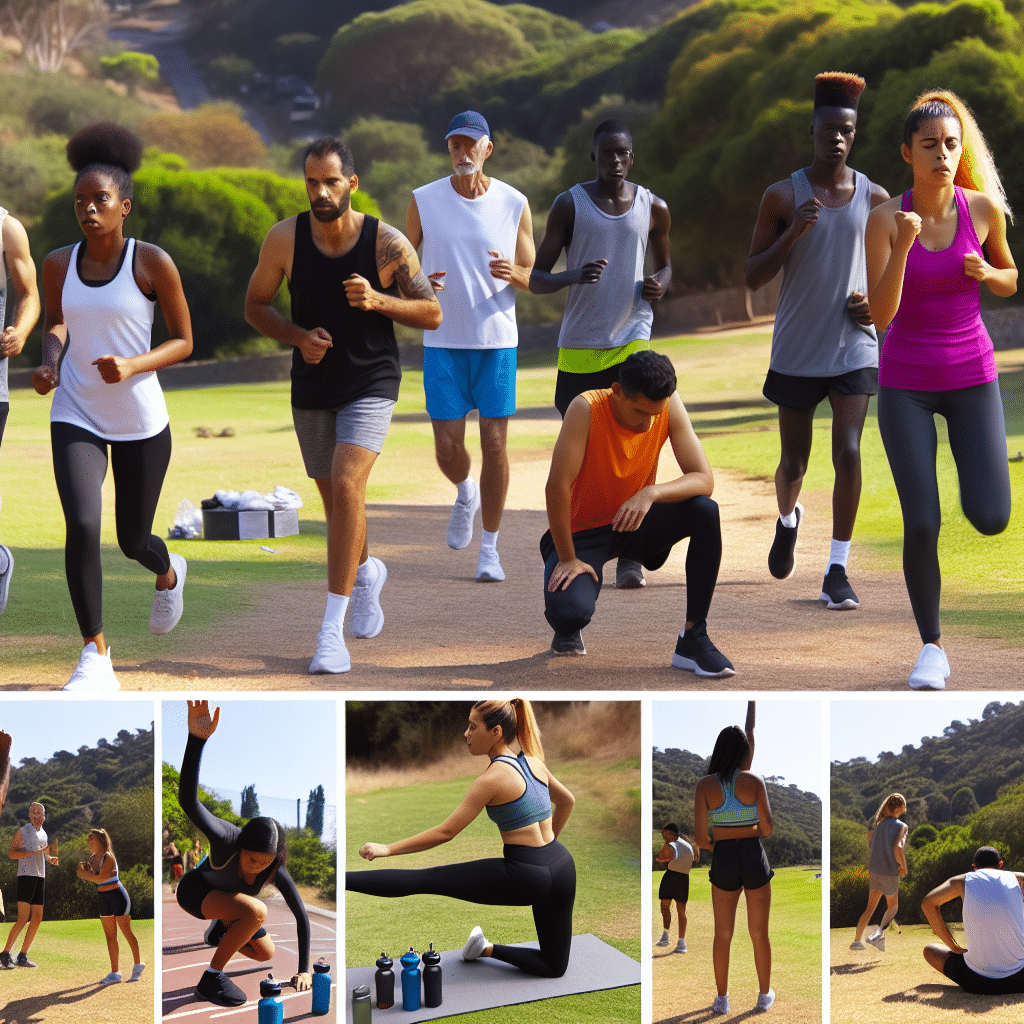The integration of fitness trails into community parks and recreational areas has revolutionized how people engage in outdoor exercise. These trails not only provide a scenic route for walking, running, or cycling but also incorporate workout stations designed to promote physical fitness. An essential component that enhances these trails’ usability and effectiveness is fitness trail signage. But what makes this signage so vital, and how can it be designed to maximize its benefits?
Why Is Fitness Trail Signage Important?
Fitness trail signage serves multiple purposes, making it a critical element of any fitness trail:
Guidance and Navigation
Fitness trail signage helps users navigate the trail. Clear, easily readable signs ensure that users can follow the trail without getting lost. They indicate starting points, routes, distances, and directions to different workout stations, thus enhancing the user experience.
Instruction and Safety
Proper signage provides instructions on how to use the workout stations safely and effectively. These instructions are crucial, especially for beginners who may be unfamiliar with certain exercises or equipment. Additionally, safety warnings help prevent injuries by outlining proper usage and form.
Motivation and Engagement
Creative and engaging signage can motivate users to complete their workout and even push their limits. Inspirational quotes, interactive elements, or even QR codes linking to video demonstrations can make the fitness trail experience more enjoyable and engaging.
Key Elements of Effective Fitness Trail Signage
To maximize the benefits, fitness trail signage must be carefully designed. Here are some key elements that make signage effective:
Clarity and Readability
Font size, color contrast, and simplicity play significant roles in ensuring signs are easily readable by all users, including those with visual impairments. Avoiding clutter and using universally recognized symbols can make the signage user-friendly.
Durability and Weather Resistance
Fitness trail signage is exposed to various weather conditions. Therefore, it should be made from weather-resistant materials such as coated metals, treated wood, or durable plastics. Ensuring the longevity of the signs prevents the need for frequent replacements and keeps the trail looking well-maintained.
Inclusivity and Accessibility
Considering the diverse range of users, including children, elderly individuals, and people with disabilities, is essential. Information should be inclusive, offering instructions and route options for varying fitness levels and abilities.
Innovative Ideas for Fitness Trail Signage
To elevate the fitness trail experience, integrating innovative ideas into fitness trail signage can make a significant difference. Here are a few suggestions:
Interactive Technology
Incorporating QR codes on the signage can connect users to online resources, including video tutorials, workout routines, or even tracking apps to monitor their progress. This blend of physical and digital elements can provide a comprehensive fitness experience.
Eco-Friendly Materials
Using sustainable materials for fitness trail signage demonstrates a commitment to the environment. Options like recycled plastics, reclaimed wood, or biodegradable materials can be both functional and eco-friendly.
Aesthetic Appeal
Collaborating with local artists to design unique and visually appealing signs can enhance the overall aesthetics of the trail. Artistic elements not only beautify the space but also create a more inviting atmosphere for users.
Implementing Fitness Trail Signage in Your Community
For communities looking to implement or upgrade their fitness trails, focusing on signage is a strategic move. Here’s a step-by-step guide to getting started:
Community Involvement
Engage the community in the planning process. Conduct surveys or focus groups to understand user needs and preferences. Involving community members ensures that the trail meets their expectations and enhances their sense of ownership and pride.
Professional Design and Installation
Work with professionals to design and install the signage. Experts in graphic design, ergonomics, and material science can help create effective, durable signage that meets all the necessary criteria for clarity, durability, and accessibility.
Regular Maintenance and Updates
Once installed, establish a maintenance schedule to ensure that the signs remain in good condition. Regular inspections and prompt repairs or replacements of damaged signs keep the trail safe and functional. Additionally, periodically updating the content can keep the experience fresh and relevant.
Conclusion: Elevate Your Fitness Trail with Effective Signage!
Incorporating well-designed fitness trail signage is essential for creating a user-friendly, safe, and engaging outdoor exercise environment. From guiding users along the trail to instructing them on proper exercise techniques and providing motivational boosts, good signage significantly enhances the overall experience. By carefully considering the elements of clarity, durability, accessibility, and innovation, communities can create fitness trails that not only promote physical health but also foster a sense of community and well-being. So, whether you’re planning a new fitness trail or looking to improve an existing one, don’t underestimate the power of effective fitness trail signage!




